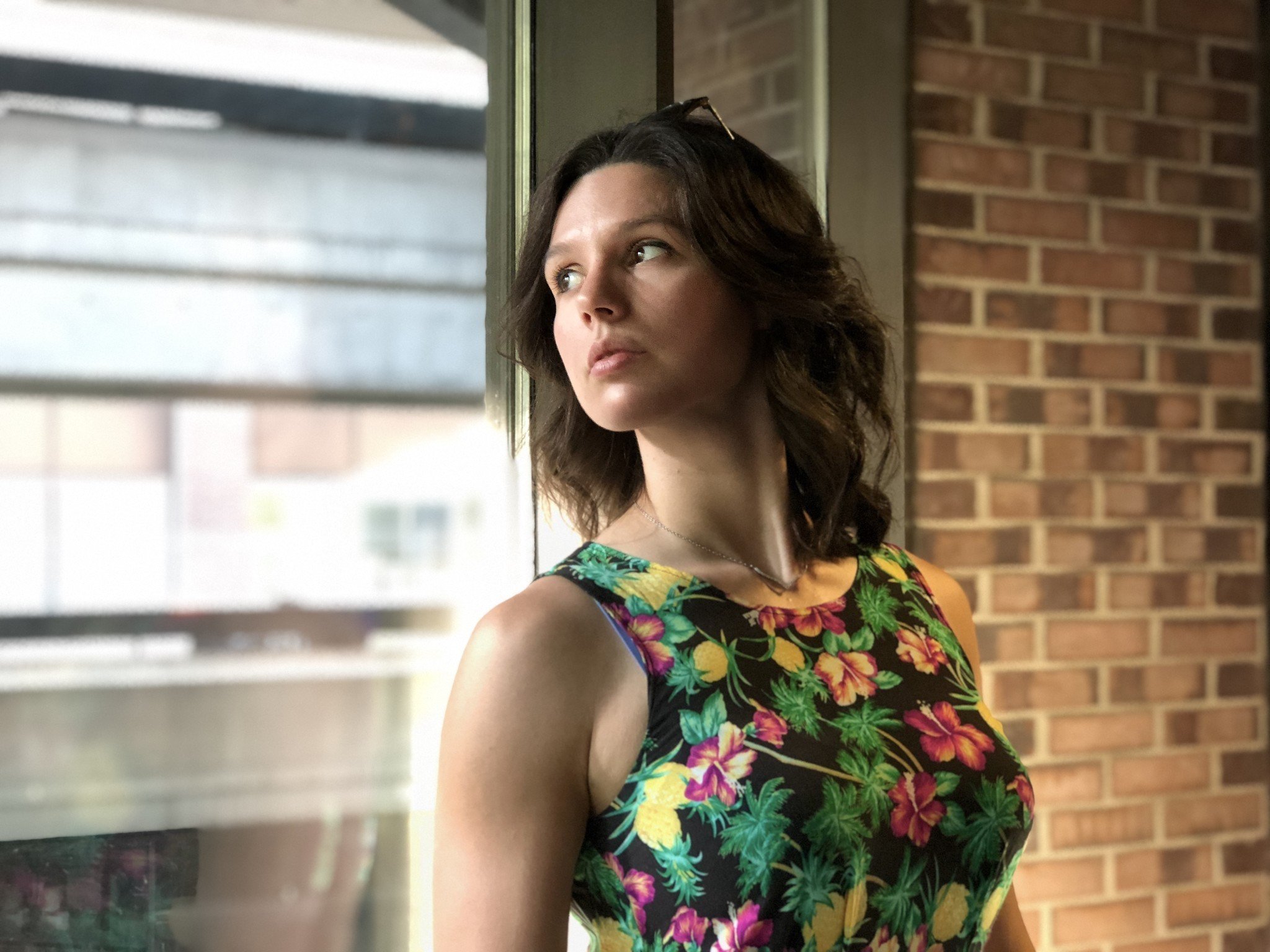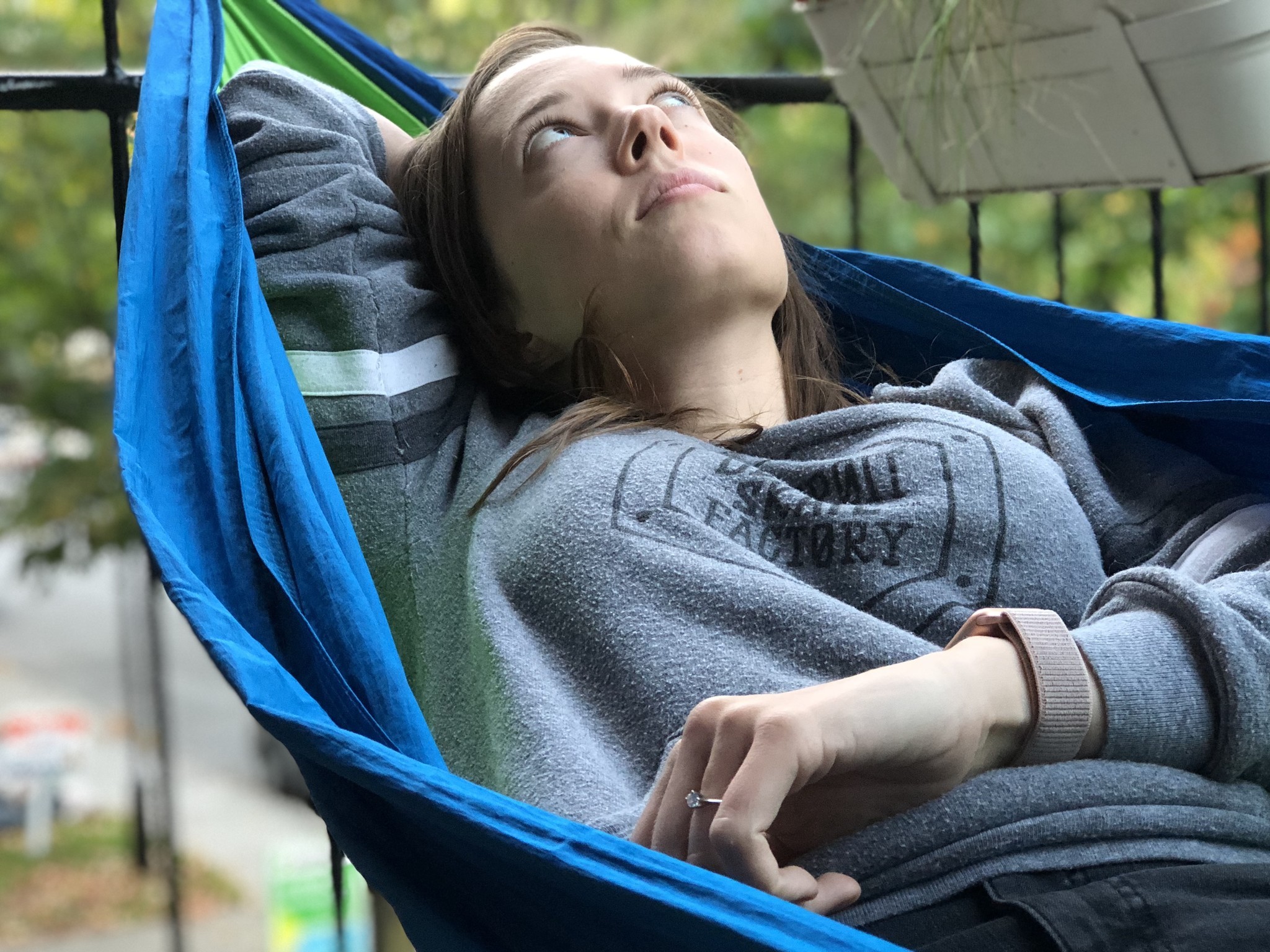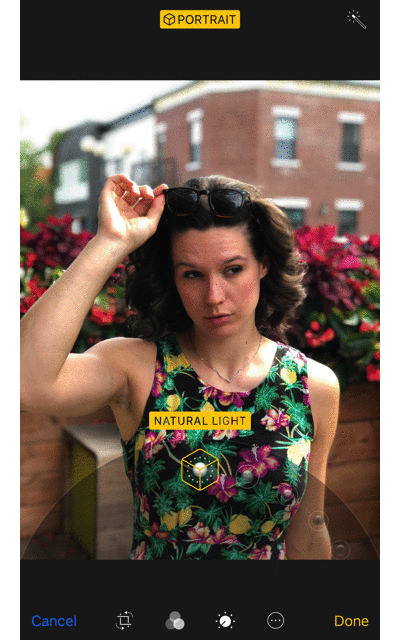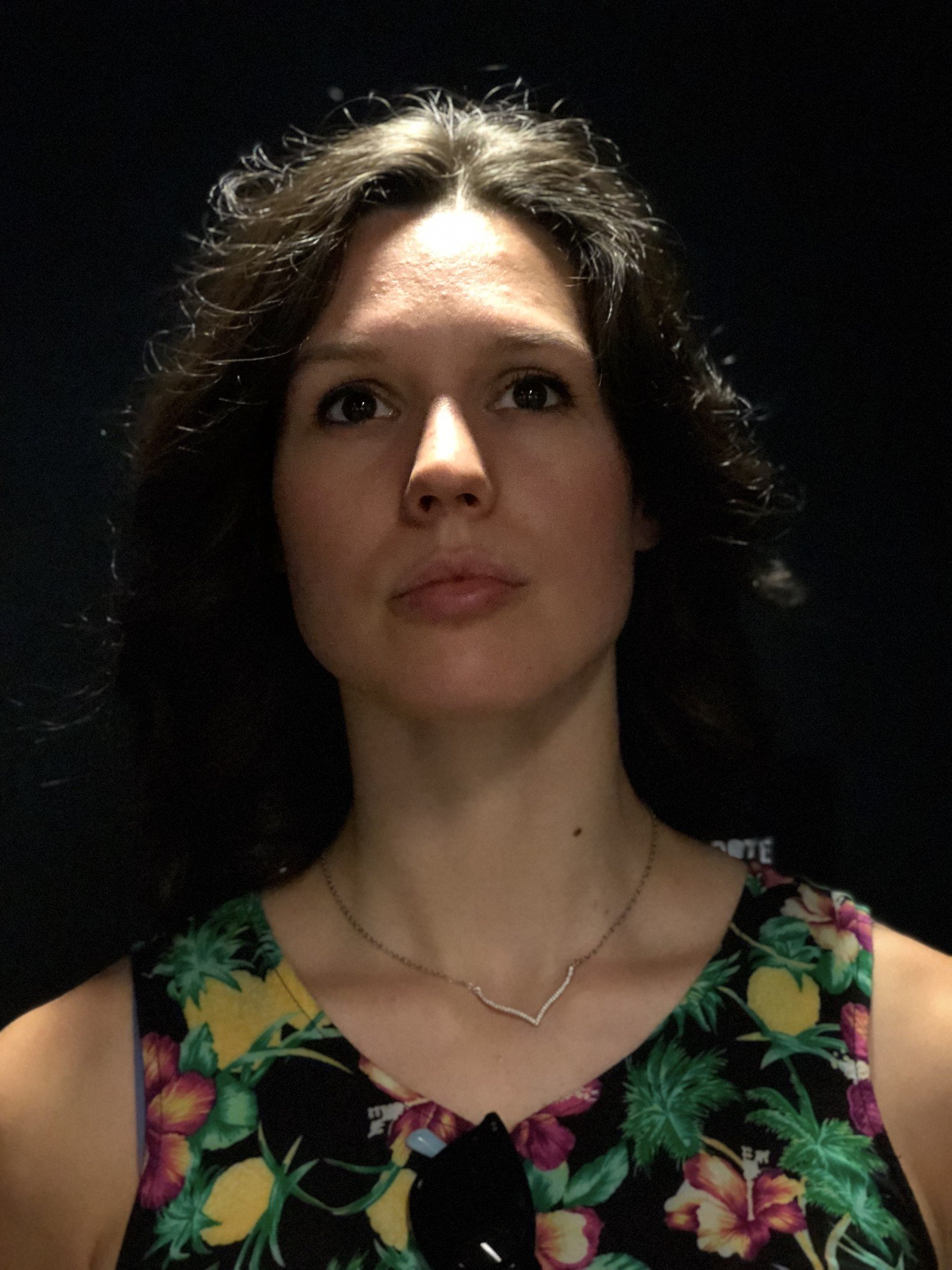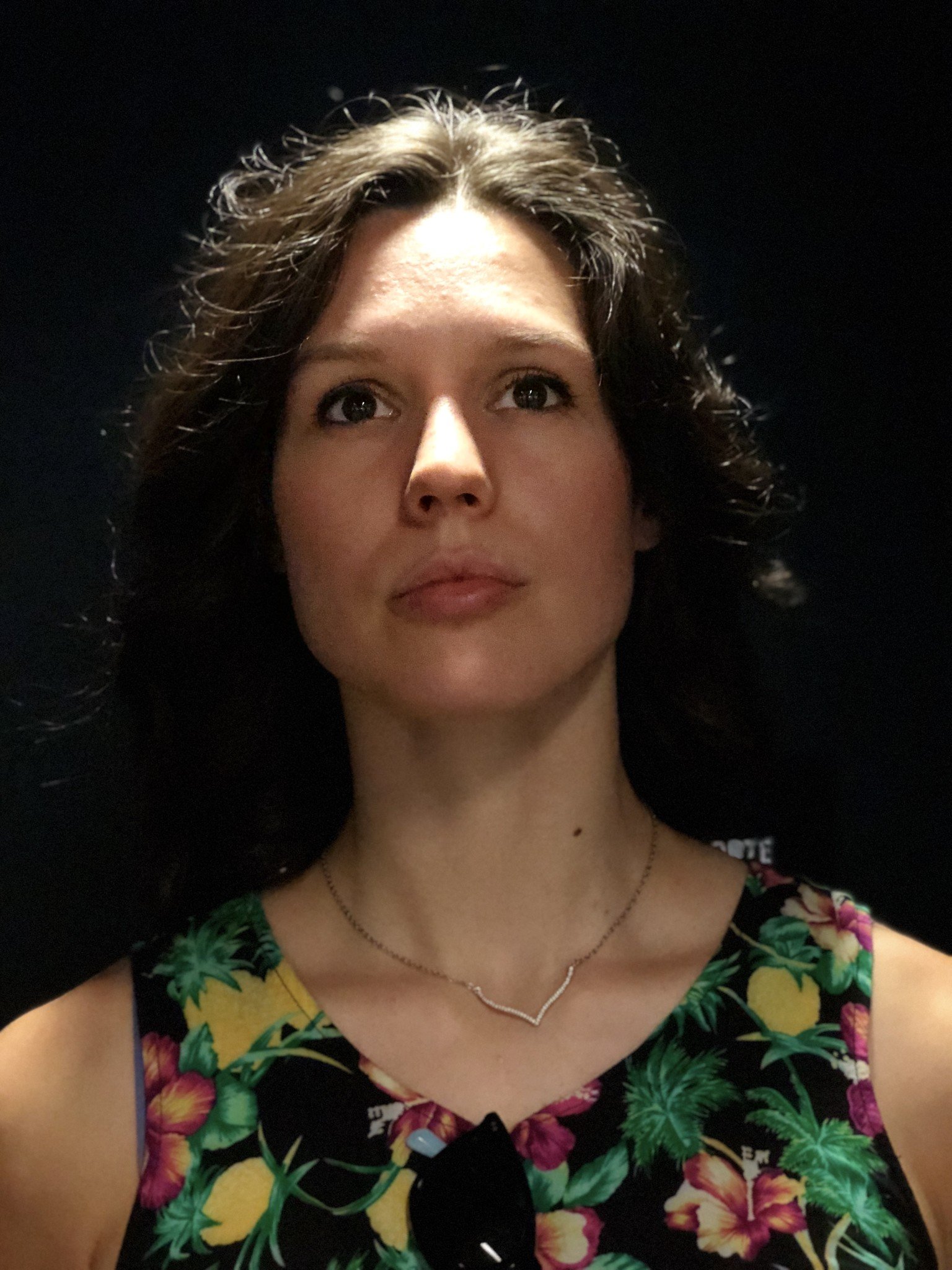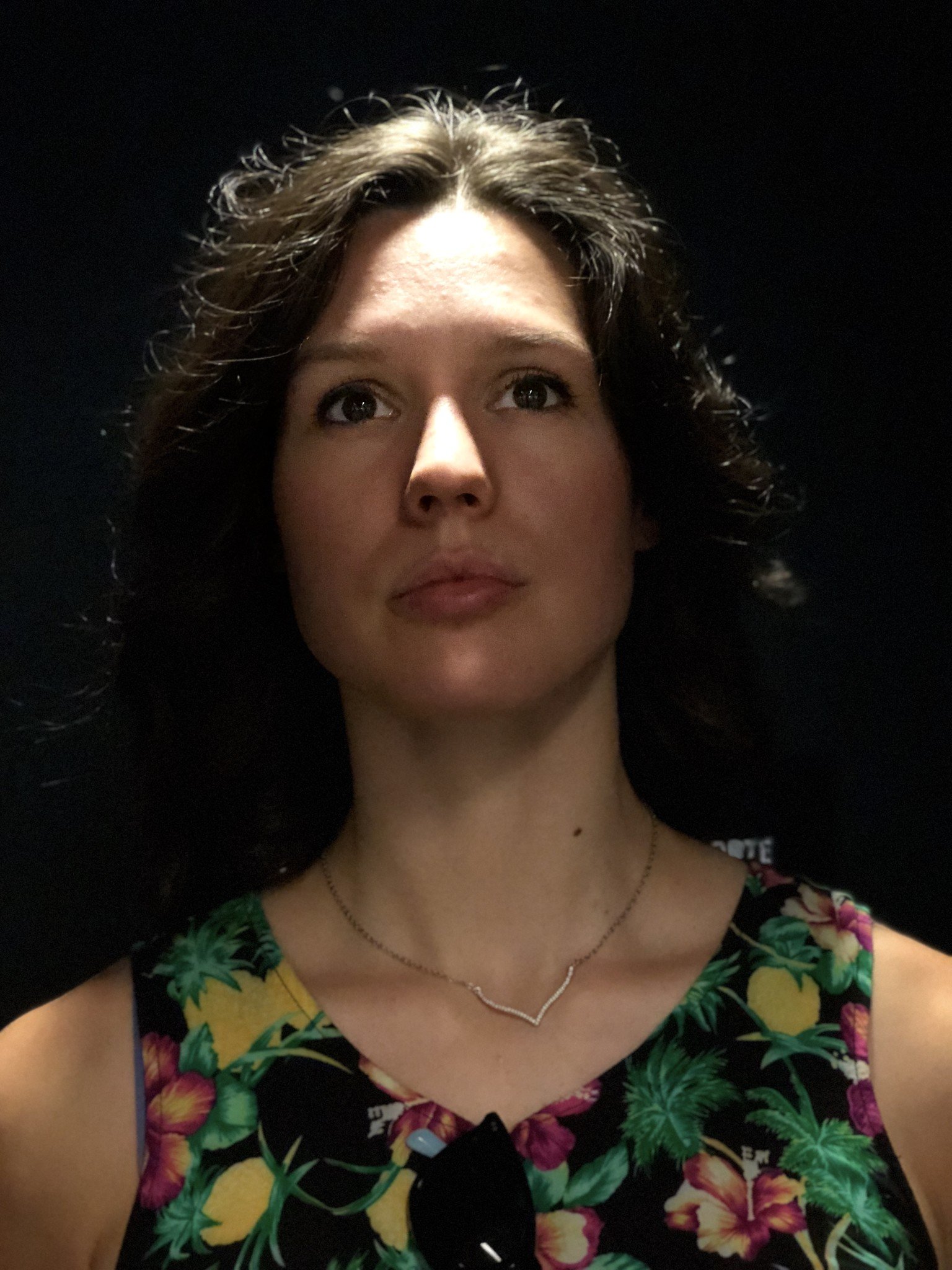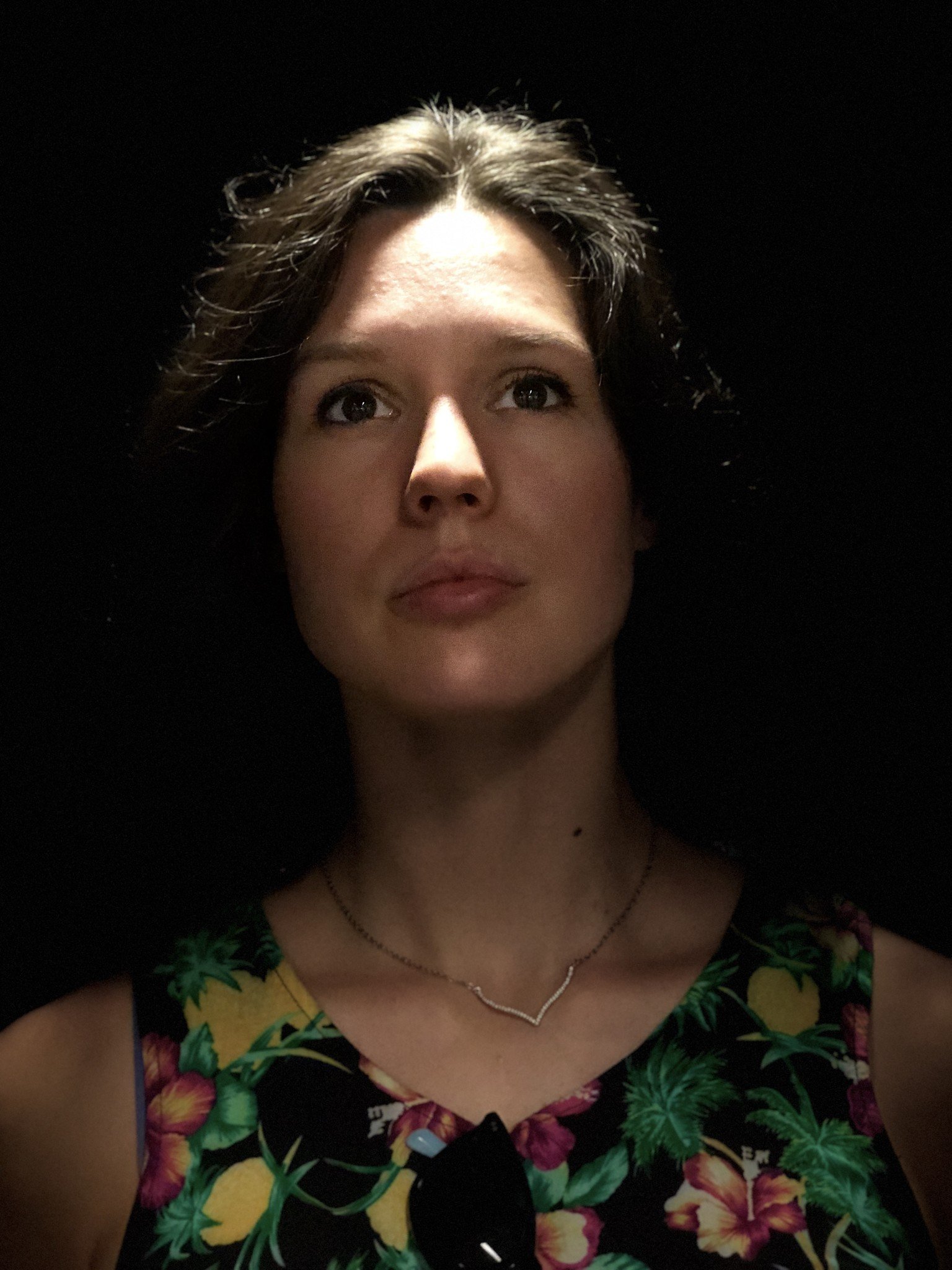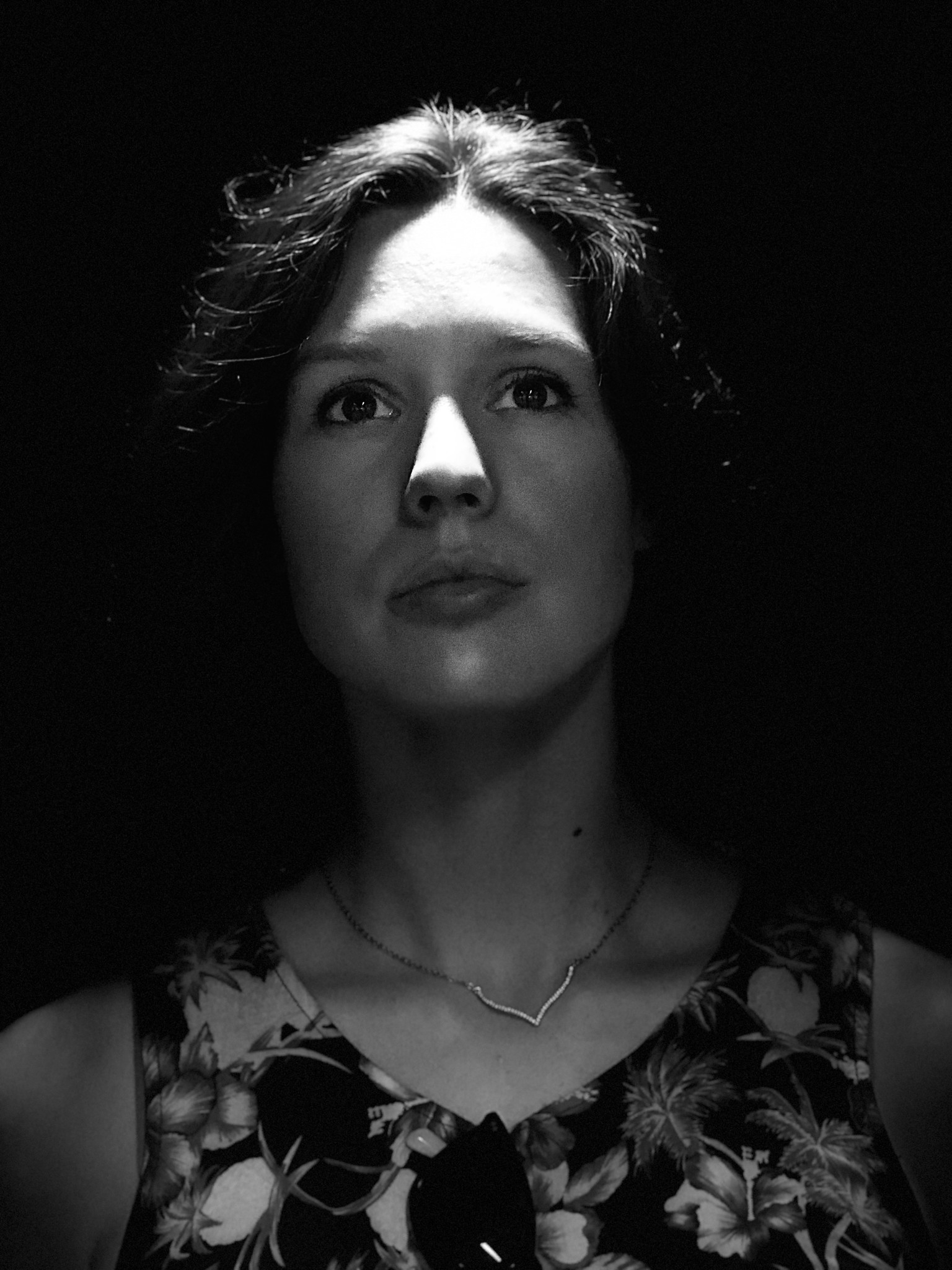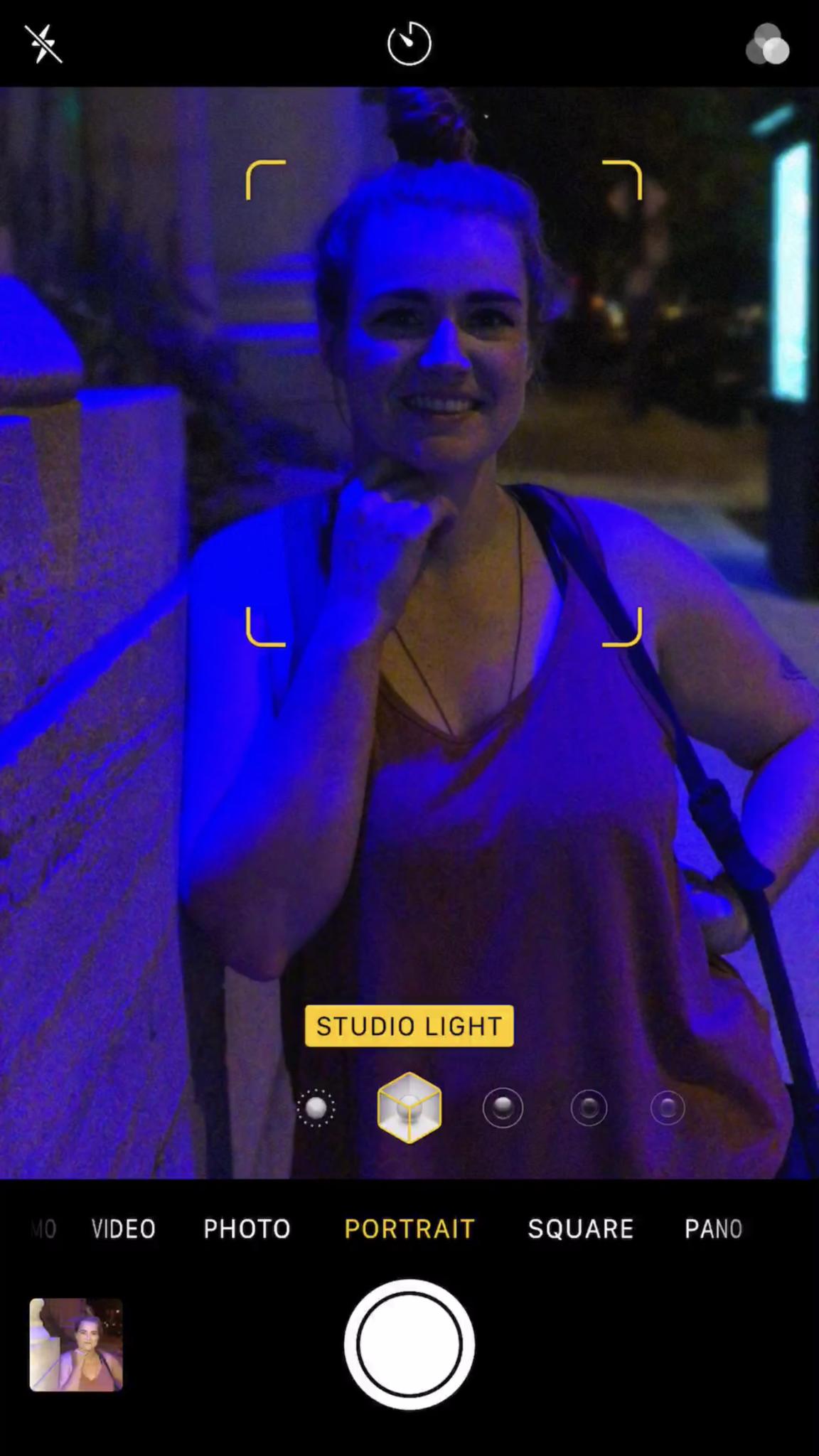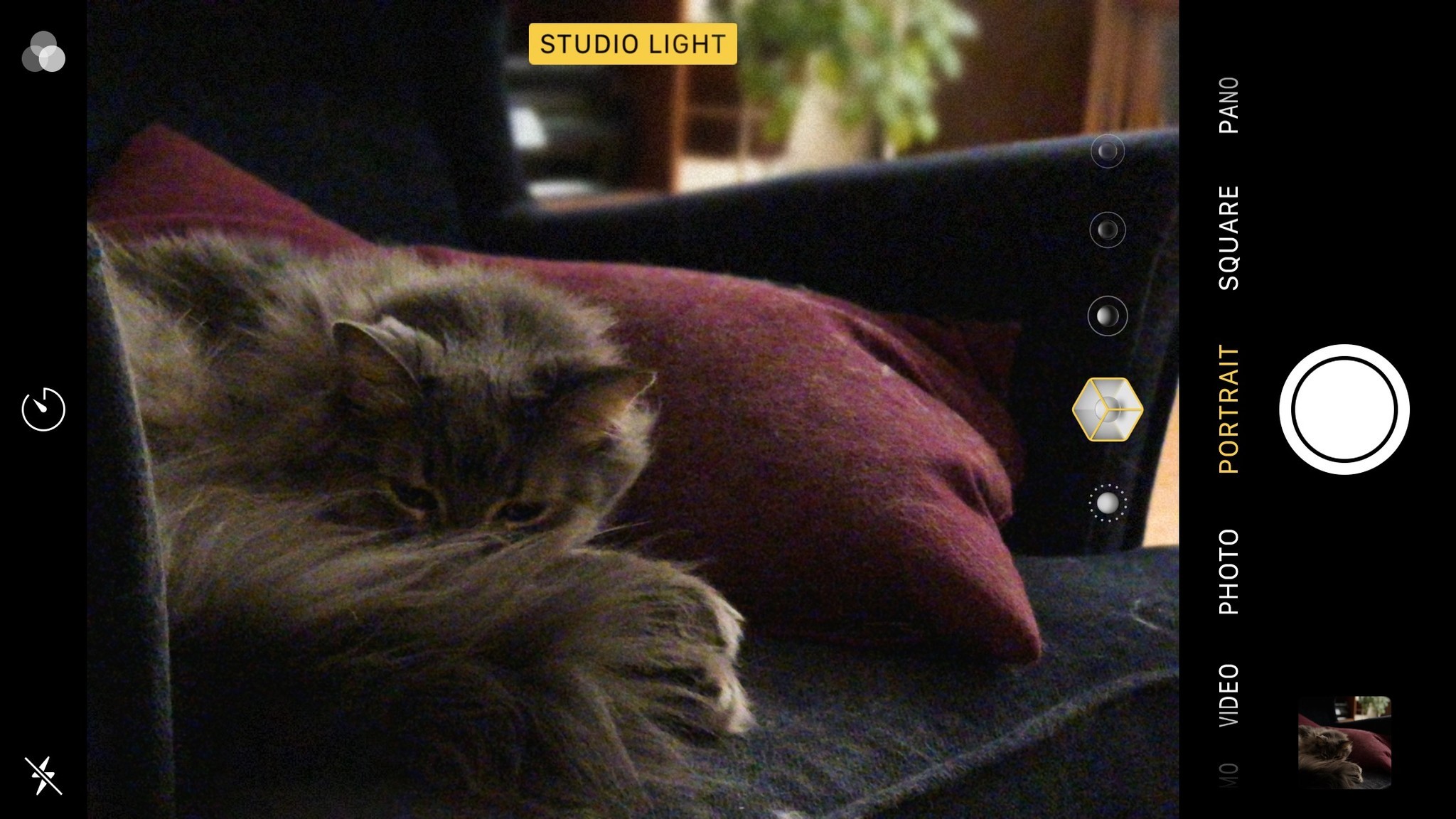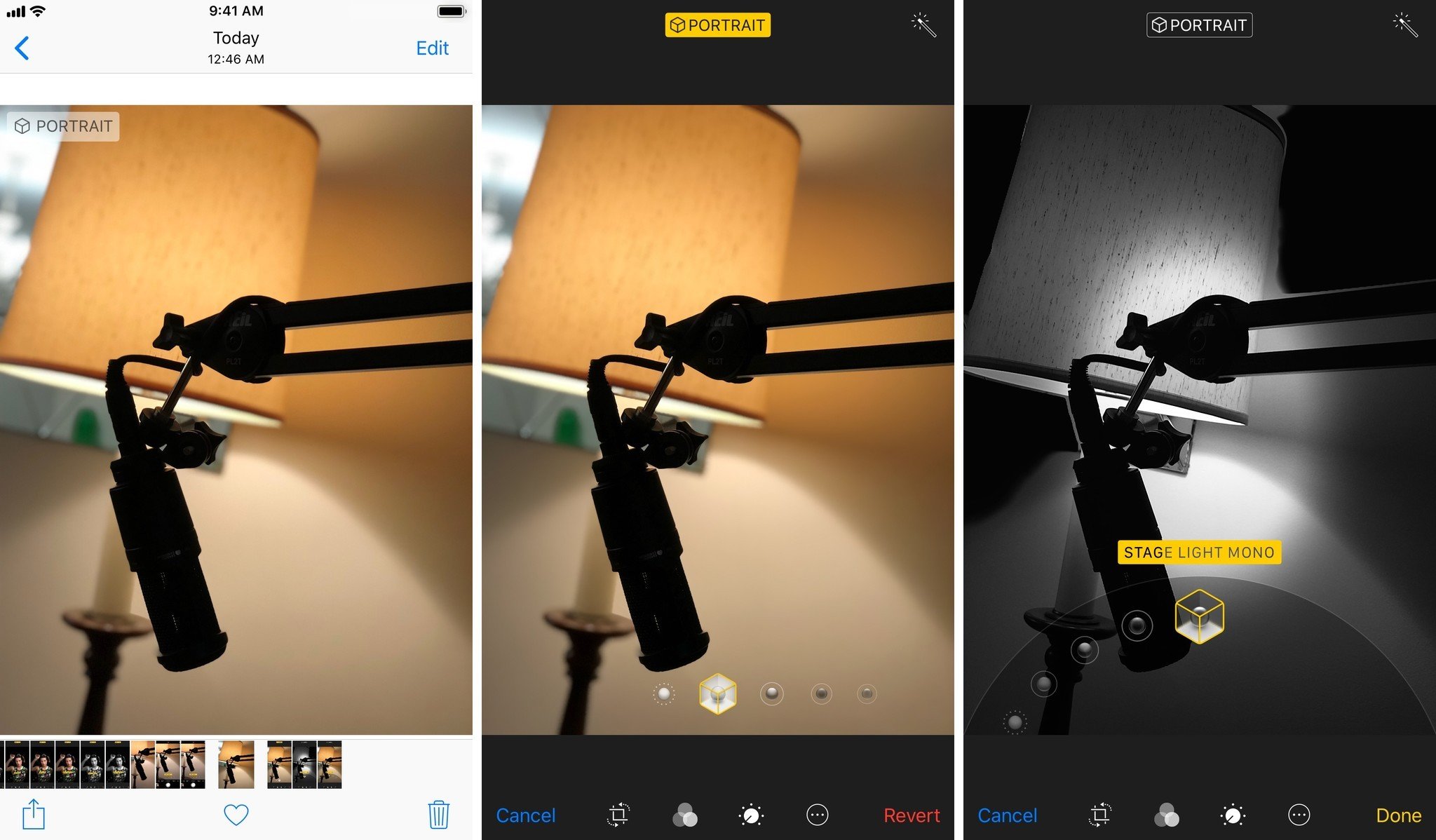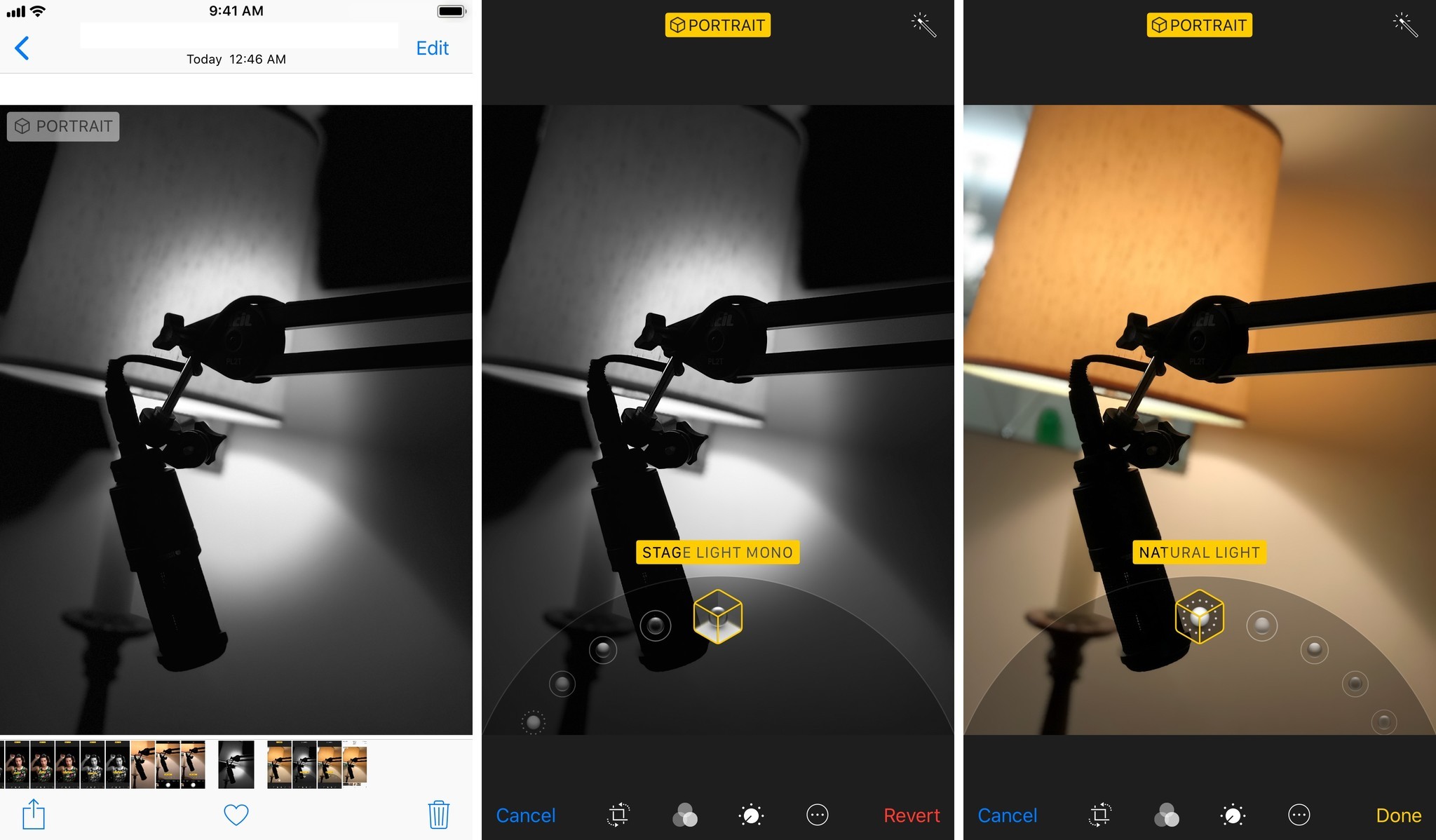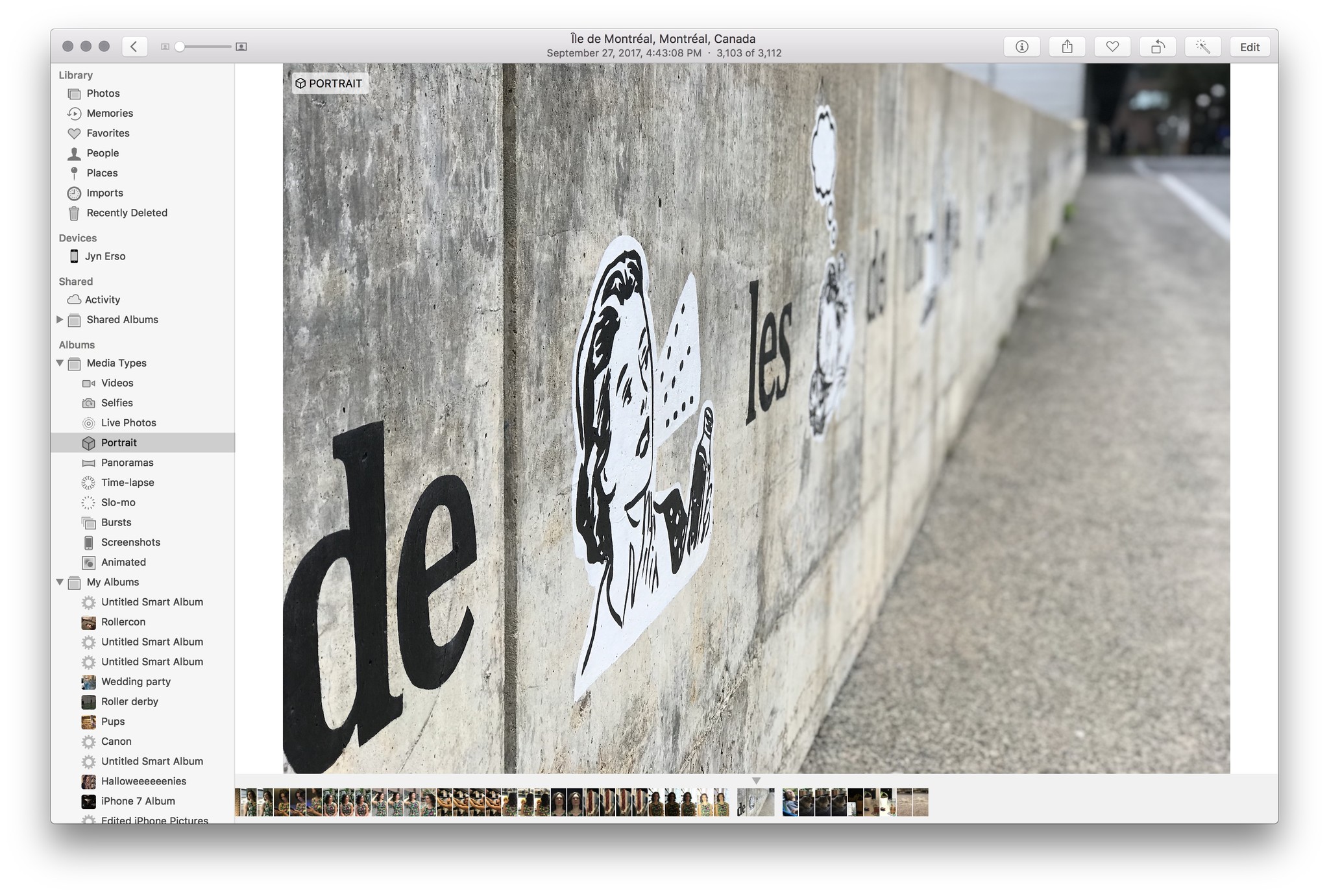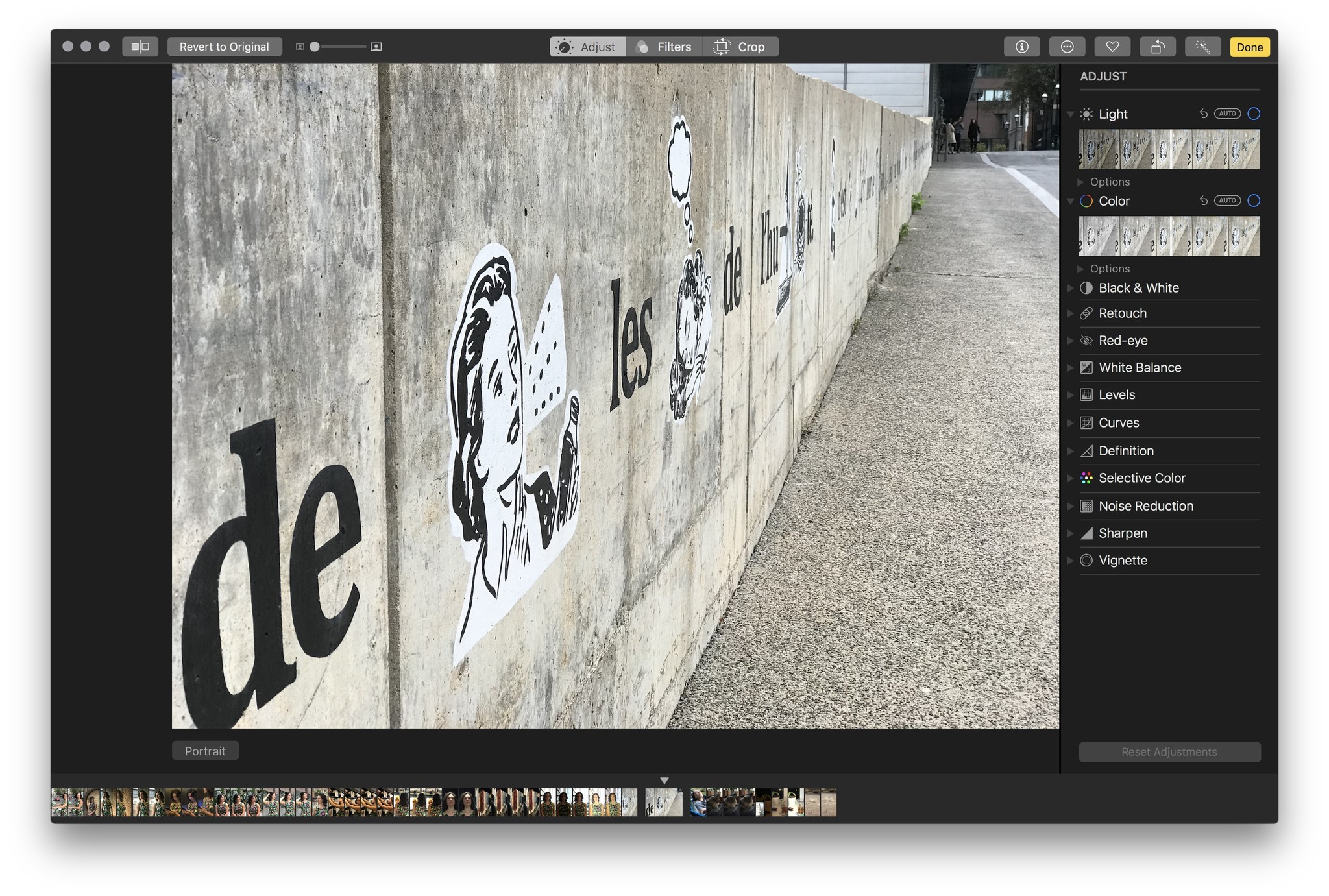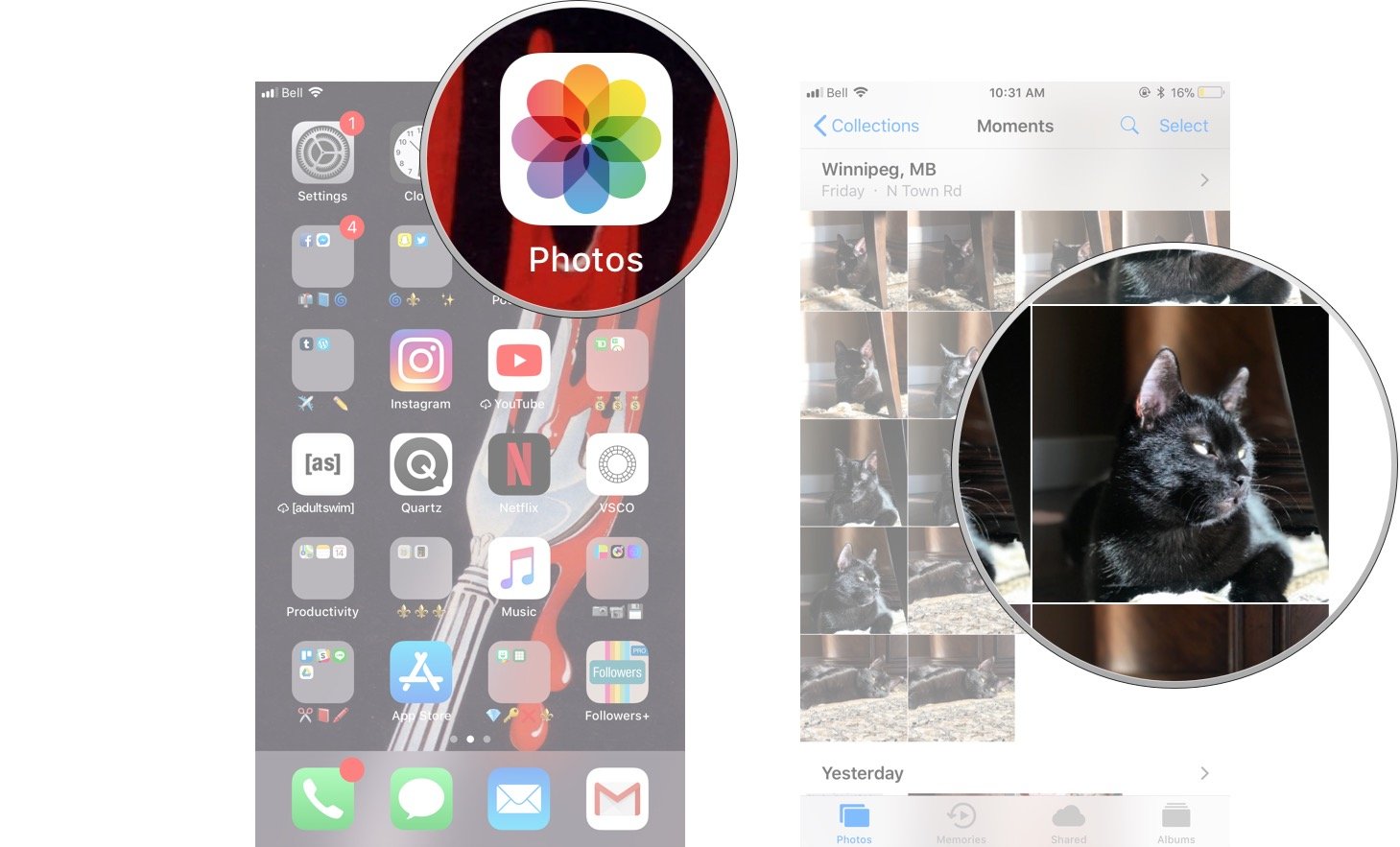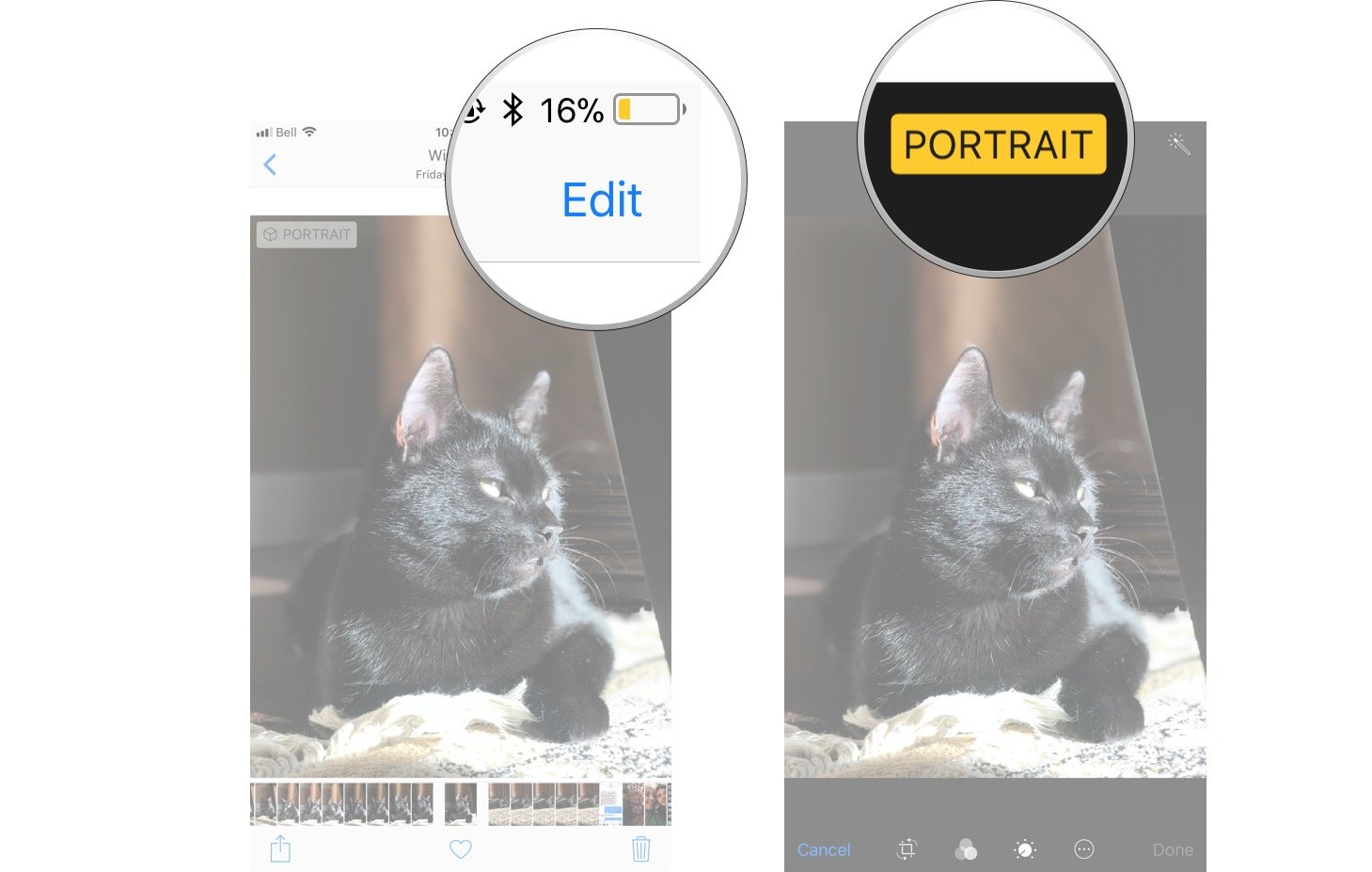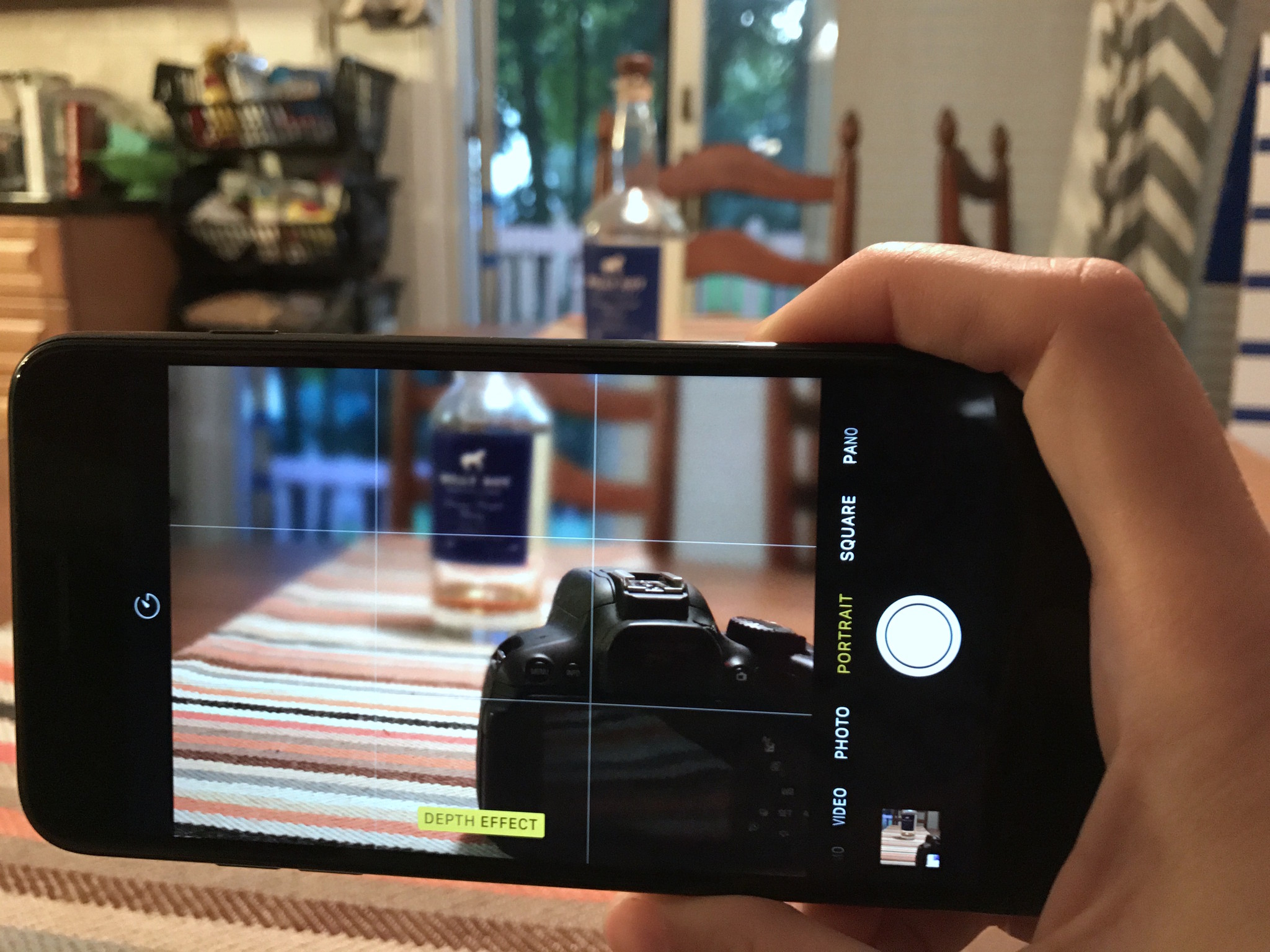How to use Portrait mode and Portrait Lighting on iPhone X
- sep
- 29
- Posted by Michael
- Posted in Okategoriserade
What exactly is Portrait mode on the iPhone, and how do you use it? Here's everything you need to know.
Exclusively available for the iPhone X, 8 Plus, and 7 Plus, Portrait mode uses the 56mm-equivalent (52mm-equivalent on the iPhone X) "telephoto" lens kit on your iPhone to shoot images in portrait or landscape orientation with "bokeh"-style blurred backgrounds and foregrounds.
The 8 Plus and iPhone X also get Portrait Lighting as part of this feature: It uses machine learning and Portrait mode's depth map to intelligently add special lighting to your photos in real time. Here's how to use it!
- How does Portrait mode work?
- How does Portrait Lighting work?
- How to shoot a person in Portrait mode or Portrait Lighting mode
- How to take photos of other objects and animals in Portrait mode
- How to shoot a great Portrait selfie
- How to remove depth or lighting effects on a photo
How does Portrait mode work?
When you shoot in the Camera app's Portrait mode, you're framing an image as seen by your iPhone's 2x "telephoto" lens. But the wide-angle is also working for you: It automatically measures the difference in distance between what it sees and what the telephoto sees, creating a multi-point depth map.
This depth map is then used to create the most fun part of Portrait mode: artificial depth of field, which blurs both the background and foreground with various "bokeh" effects to create a DSLR-camera-like image. On the 8 Plus and X, you'll also use the depth map for Portrait Lighting (more on that below).
When in Portrait mode, you can only frame with the telephoto lens (there are no zoom options, digital or otherwise), but as of iOS 11, users have most other Camera app features available to them. That includes flash — and the iPhone 8 Plus's and iPhone X's Slow Sync flash feature — along with timed photos, filters, and HDR. You can't get Live Photos quite yet, but you can always record your iPhone's screen while in the Camera app if you really want a pseudo-live Portrait photo.
How does Portrait Lighting work?
The iPhone 8 Plus and iPhone X support Portrait Lighting: It augments existing Portrait mode features by using the depth map to add different lighting options to your image on the spot or later in post-processing.
In a professional studio, photographers use all sorts of lights when photographing a subject. By altering these lights, an experienced photographer can use the light on or around the subject to emphasize certain areas of the photo. Portrait Lighting allows users to do the same thing, but digitally: You can choose one of five different lighting settings to adjust your iPhone's "virtual" light rig. And as with Apple's other editing features, it's non-destructive: You can add or remove Portrait Lighting at any time.
Note: Portrait Lighting is currently in beta, and may not work properly 100% of the time; luckily, you can easily turn it off from the Editing screen.
There are currently five different types of Portrait lighting: Natural, Studio, Contour, Stage Light, or Stage Light Mono.
Natural Light
This is the basic lighting mode that Portrait Mode has always used, which keeps your subject's face in focus and blurs the background for contrast.
Studio Light
Your subject's face will be in focus and brightly light allowing you to see more detail in the face while the background will blur for contrast.
Contour Light
Will cast shadows on your subject's face and surroundings to show a dramatic difference between highlights and lowlights.
Stage Light
Cuts the background of the photo out into a deep black while light on the subject is bright and clear, giving a dramatic, high-contrast photo.
Stage Light Mono
Just like Stage Light, Stage Light Mono will cut the background of the photo away and brightly illuminate your subject; however, it will also apply a monochrome filter with a black and white photo.
How to shoot a person in Portrait mode or Portrait Lighting mode
Want to take a photo of someone in Portrait mode? Here's how you go about it.
- Open the Camera app.
- Swipe over to the Portrait setting.
- Line up the shot you wish to take within 2-8 feet of your subject. The camera's face and body detection should automatically identify your subject.
- Pay attention to the Camera app's prompts (either "More light required," "Flash may help," "Place subject within 8 feet," or "Move farther away.")
Once you've met the camera's needs, you'll see the banner at the bottom (iPhone 8 Plus, iPhone X) or top (iPhone 7 Plus) turn yellow.
Note: You can still shoot with the telephoto lens in Portrait mode even if the banners don't turn yellow — it just means you won't get depth or lighting effects.
- If you have an iPhone 8 Plus or X, you can swipe or tap on the cube icons above the shutter button to change your lighting effects.
- Press the shutter button to take your photo.
How to take photos of other objects and animals in Portrait mode
Shooting other, non-human objects isn't officially supported for Portrait mode, but you can still do so if you wish; just be prepared for the artificial depth of field to not look perfect.
- Line up the shot you wish to take within 8 feet of your subject. Your iPhone will attempt to automatically identify a subject or focal point, but you can also tap on the screen to set a manual focal point.
Pay attention to the Camera app's prompts (either "More light required," "Flash may help," "Place subject within 8 feet," or "Move farther away.")
Once you've met the camera's needs, you'll see the banner at the bottom (iPhone 8 Plus, iPhone X) or top (iPhone 7 Plus) turn yellow.
Note: You can still shoot with the telephoto lens in Portrait mode even if the banners don't turn yellow — it just means you won't get depth or lighting effects.
- If you have an iPhone 8 Plus or X, you can swipe or tap on the cube icons above the shutter button to change your lighting effects.
- Press the shutter button to take your photo.
How to take great Portrait Lighting selfies with iPhone X
I have a certain fondness for selfies — I find they're a great way to snap quick facial expressions you don't have an emoji for, or show off something awesome you found.
 The author, hard at work writing about selfies while... doing research by taking a selfie.
The author, hard at work writing about selfies while... doing research by taking a selfie.
The iPhone X is Apple's best smartphone yet for great front-facing photos, thanks to its TrueDepth system, which lets you take selfies with actual depth to them, simulating the bokeh-style effect of DSLR cameras.
How to take great Portrait Lighting selfies with iPhone X
How to remove depth or lighting effects on a photo
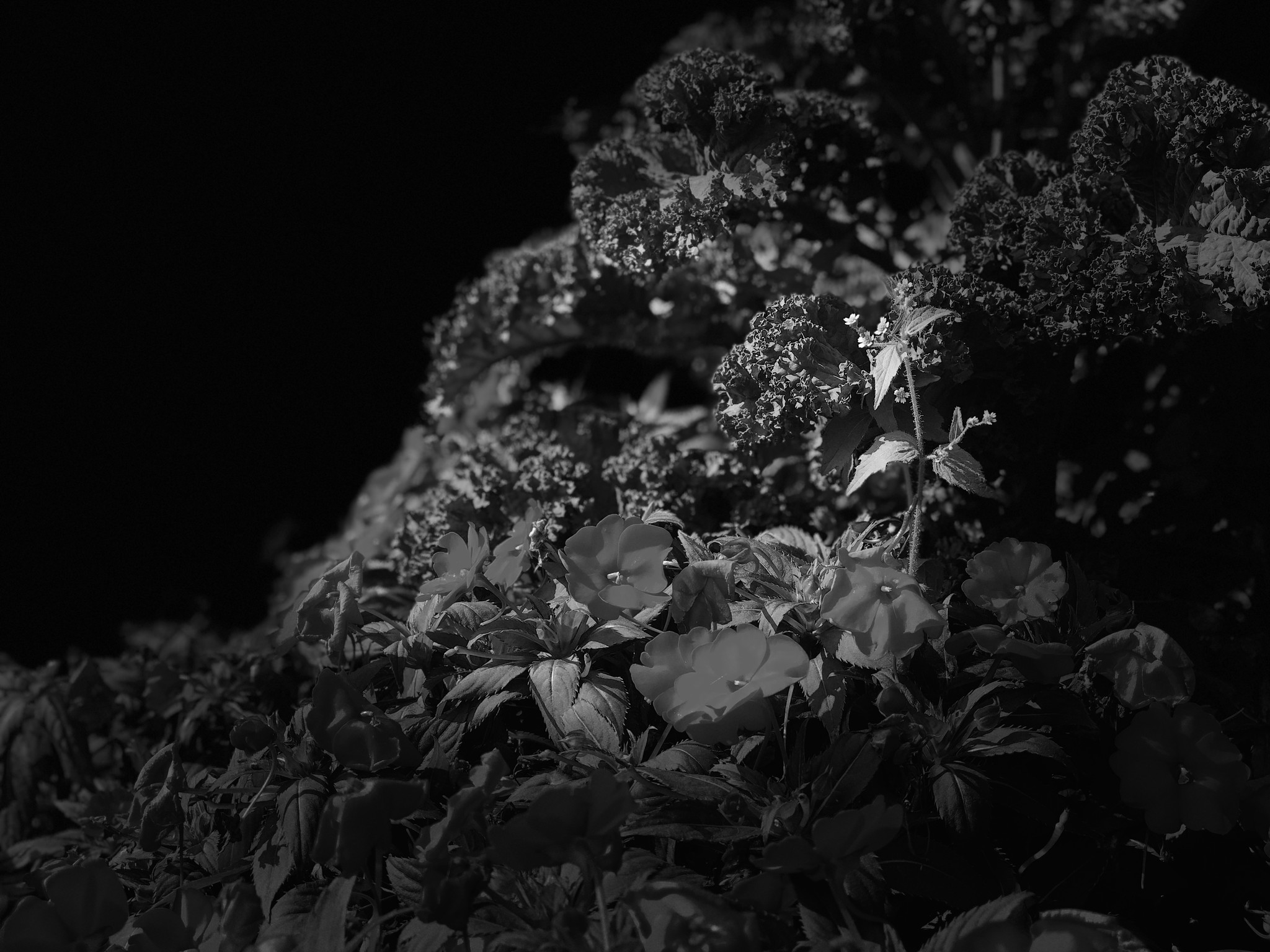
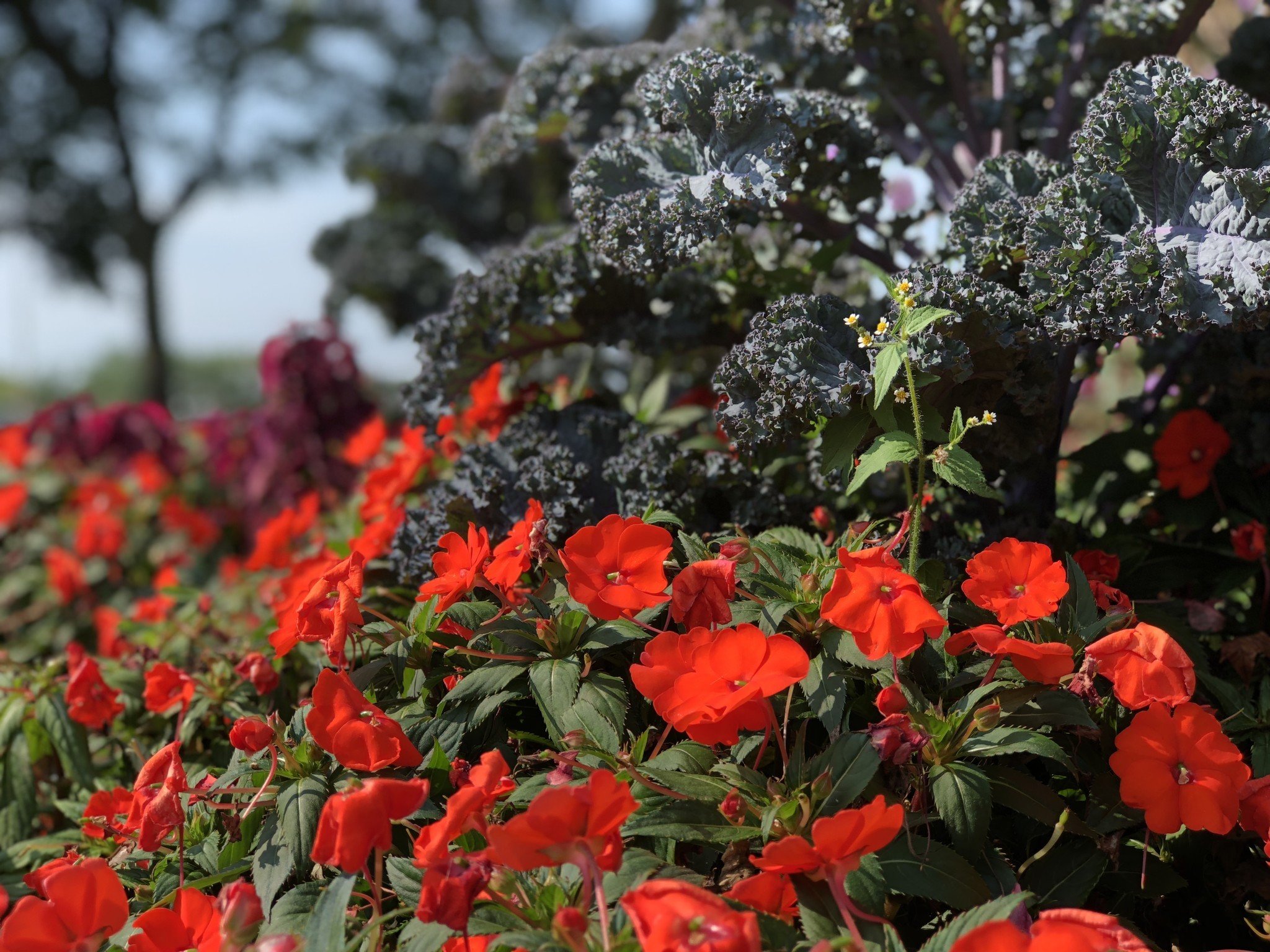 Stage lighting? Not always such a good call. But taking it away is an easy fix.
Stage lighting? Not always such a good call. But taking it away is an easy fix.
If you took a shot in Portrait mode and decide you'd rather not have that bokeh effect or Stage Lighting gracing your image, removing either option is an easy fix. And because Apple operates non-destructively, you can always restore the look later on if you so choose.
Note: Though you shoot both Depth effects and Lighting effects in Portrait mode, they exist independently of each other: You can remove Depth without removing lighting effects, and vice versa.
How to remove a photo's depth effect on your iPhone
- Open the Photos app on your iPhone or iPad.
- Find the Portrait mode photo you want to edit.
Tap Edit.
Tap on the yellow Portrait button when it appears at the top of the screen.
Note: Users can only remove depth effects on images taken on iOS 11 or later; Portrait mode photographs taken on iOS 10 won't load the Portrait removal button.
- Tap Done.
How to remove or change a photo's lighting effect on your iPhone
Note: This feature is only available for iPhone 8 Plus or iPhone X.
- Open the Photos app on your iPhone or iPad.
- Find the Portrait mode photo you want to edit.
Tap Edit.
- Tap on the cube in the bottom center of the screen to bring up the lighting menu.
- Swipe right on the cubes to return to the Natural Lighting option, or pick an alternate lighting option.
- Tap Done.
How to remove a photo's depth or lighting effect on macOS High Sierra
- Open Photos from your Dock or Applications folder.
Double-click on the photo you want to edit.
- Click Edit.
- Click on the Portrait button in the bottom-left corner of the editing screen to disable it. You can also click on the cubes (if available) to adjust lighting effects.
Click Done.
Just as you can on iOS 11, go back in and click the Portrait button again to restore the bokeh effect to the photo.
How to remove Depth Effect from Portrait Mode photos in iOS 11
Looking to remove Depth Effect from your Photos on your iPhone? Here's how!
- Tap the Photo app.
Tap the Portrait Mode image you would like to remove Depth Effect from.
- Tap Edit in the upper right corner.
Tap Portrait at the top of the screen. This will make the Depth Effect disappear. You can tap it again to bring it back.
If you don't want to go through Photos to remove the Depth Effect, or maybe you want to do some other editing while you're messing around with the feature, then you should consider using a third-party app.
There are different third-party apps that have started letting users edit and tweak their Portrait Mode masterpieces by using hooks in iOS 11 along with the same advanced camera technology that comes along with the iPhone 7 Plus, iPhone 8 Plus, and the iPhone X. Pretty awesome, hey?! (Cella Lao Rousseau, iMore)
Some of the best apps out there to do this include Focos, Slør, Anamorphic, and infltr.
Questions about Portrait mode and Portrait Lighting?
Let us know in the comments.
Updated January 2018: Updated with How to remove Depth Effect from Portrait Mode photos in iOS 11.
iPhone photography
- How the iPhone X camera and Slow Sync Flash work
- How to use Portrait Lighting
- Camera tests: TrueDepth Portrait vs Rear Portrait
- Tips for shooting great Stage Light Portraits
- Ten tips for taking great iPhone photos
- Camera app: The ultimate guide
- Photos: The ultimate guide
- Best manual camera apps that shoot RAW for iPhone
Senaste inläggen
- iOS 18 might add AI-powered Messages summary feature for your friends who text too much
- Apple boss says it has ”advantages that will differentiate” its AI push
- Apple celebrates May 4th with fun new Star Wars ad for ’Find Your Friends’
- Ny video från Apple – med tema från Star Wars
- Apple’s May 7 iPad Pro and Air event won’t include the rumored AI announcement, and nor should it
Senaste kommentarer
Arkiv
- maj 2024
- april 2024
- mars 2024
- februari 2024
- januari 2024
- december 2023
- november 2023
- oktober 2023
- september 2023
- augusti 2023
- juli 2023
- juni 2023
- maj 2023
- april 2023
- mars 2023
- februari 2023
- januari 2023
- december 2022
- november 2022
- oktober 2022
- september 2022
- augusti 2022
- juli 2022
- juni 2022
- maj 2022
- april 2022
- mars 2022
- februari 2022
- april 2021
- mars 2021
- januari 2021
- december 2020
- november 2020
- oktober 2020
- september 2020
- augusti 2020
- juli 2020
- juni 2020
- maj 2020
- april 2020
- mars 2020
- februari 2020
- januari 2020
- december 2019
- november 2019
- oktober 2019
- september 2019
- augusti 2019
- juli 2019
- juni 2019
- maj 2019
- april 2019
- mars 2019
- februari 2019
- januari 2019
- december 2018
- november 2018
- oktober 2018
- september 2018
- augusti 2018
- juli 2018
- juni 2018
- maj 2018
- april 2018
- mars 2018
- februari 2018
- januari 2018
- december 2017
- november 2017
- oktober 2017
- september 2017
- augusti 2017
- juli 2017
- juni 2017
- maj 2017
- april 2017
- mars 2017
- februari 2017
- januari 2017
- december 2016
- november 2016
- oktober 2016
- september 2016
- augusti 2016
- juli 2016
- juni 2016
- maj 2016
- april 2016
- mars 2016
- februari 2016
- januari 2016
- december 2015
- november 2015
- oktober 2015
- september 2015
- augusti 2015
- juli 2015
- juni 2015
- maj 2015
- april 2015
- mars 2015
- februari 2015
- januari 2015
- december 2014
- november 2014
- oktober 2014
- september 2014
- augusti 2014
- juli 2014
- juni 2014
- maj 2014
- april 2014
- mars 2014
- februari 2014
- januari 2014
Kategorier
- –> Publicera på PFA löp
- (PRODUCT) RED
- 2015
- 25PP
- 2nd gen
- 32gb
- 3D Touch
- 3D-kamera
- 4k
- 64gb
- 9to5mac
- A10
- A9X
- Aaron Sorkin
- Accessories
- adapter
- AirPlay
- AirPods
- Aktiv
- Aktivitetsarmband
- Aktuellt
- Alfred
- AMOLED
- Android Wear
- Angela Ahrendts
- Ångerätt
- announcements
- Ansiktsigenkänning
- app
- App Store
- Appar
- Apple
- Apple Beta Software Program
- Apple Book
- Apple CarPlay
- Apple Event
- Apple iMac
- Apple Mac Mini
- Apple Macbook
- Apple MacBook Air
- Apple MacBook Pro
- Apple Macos
- Apple Maps
- Apple Music
- Apple Music Festival
- Apple Music Radio
- Apple Offer
- Apple Online Store
- Apple Park
- Apple Pay
- Apple Pencil
- Apple Podcast
- Apple Store
- Apple Store 3.3
- Apple TV
- apple tv 4
- Apple TV 4K
- Apple Watch
- Apple Watch 2
- Apple Watch 8
- Apple Watch 9
- Apple Watch Apps
- Apple Watch SE
- Apple Watch Series 2
- Apple Watch Sport
- Apple Watch Ultra
- AppleCare
- AppleTV
- Application
- Applications
- Apps
- AppStore
- Apptillägg
- Apptips
- AppTV
- April
- Arbetsminne
- armband
- Art Apps
- Återköp
- återvinning
- Åtgärdsalternativ
- atvflash
- Audio Apps
- Augmented REality
- Back-to-school
- Bakgrundsbilder
- BankId
- Barn
- Batteri
- batteriskal
- batteritid
- Beats
- Beats 1
- Beats Solo 2 Wireless
- Beats Solo2
- Bebis
- Beginner Tips
- Belkin
- Bendgate
- beta
- Beta 3
- betaversion
- betaversioner
- bilddagboken.se
- bilder
- bilhållare
- billboard
- Bioteknik
- Blendtec
- Bloomberg
- Bloons TD 5
- Bluelounge
- Bluetooth
- Böj
- Booking.com
- Borderlinx
- bose
- bugg
- Buggar
- Buggfixar
- Butik
- C More
- Calc 2M
- Camera
- Campus 2
- Canal Digital
- Carpool Karaoke
- Caseual
- Catalyst
- CES 2015
- Chassit
- Chip
- Chrome Remote Desktop
- Chromecast
- citrix
- clic 360
- CNBC
- Connect
- Cydia
- Dagens app
- Dagens tips
- Damm
- Danny Boyle
- Data
- datamängd
- Datorer
- Datortillbehör
- Datum
- Defense
- Dekaler
- Designed by Apple in California
- Developer
- Development
- Digital Inn
- Digital Touch
- Digitalbox
- DigiTimes
- Direkt
- Discover
- display
- DisplayMate
- Dive
- Docka
- Dräger 3000
- Dropbox
- Droples
- DxOMark
- E-post
- earpod
- EarPods
- Earth Day
- Eddie Cue
- eddy cue
- Educational Apps
- Ekonomi
- Ekonomi/Bransch
- El Capitan
- Elements
- ElevationLab
- Elgato Eve
- Elgato Eve Energy
- EM 2016
- Emoji
- emojis
- emoticons
- Enligt
- EU
- event
- Eventrykten
- EverythingApplePro
- Faceshift
- facetime
- Fäste
- Featured
- Features
- Feng
- Film / Tv-serier
- Filmer
- Filstorlek
- Finance Apps
- Finder For AirPods
- Finland
- FireCore
- Fitbit
- Fitness Accessories
- Fjärrstyr
- Flurry
- Födelsedag
- fodral
- Förboka
- Force Touch
- förhandsboka
- Första intryck
- Forumtipset
- foto
- FoU (Forskning och Utveckling)
- Fource Touch
- Foxconn
- FPS Games
- Framtid
- Fre Power
- Frontpage
- Fullt
- Fuse Chicken
- Fyra
- Gadgets
- Gagatsvart
- Gamereactor
- Games
- Gaming
- Gaming Chairs
- Gästkrönika
- General
- Gigaset
- Gitarr
- Glas
- GM
- Google Maps
- Google Now
- gratis
- grattis
- Guide
- Guider
- Guider & listor
- Guld
- hack
- Halebop
- hållare
- Hälsa
- Hårdvara
- HBO
- HBO Nordic
- Health
- Health and Fitness
- Health and Fitness Apps
- Hej Siri
- Helvetica Neue
- Hemelektronik
- Hemknapp
- Hemlarm
- Hermes
- Hitta min iphone
- Hjärta
- högtalare
- HomeKit
- HomePod
- hörlurar
- htc
- Hue
- Humor
- i
- I Am A Witness
- IBM
- iBolt
- iBomber
- iBook
- icar
- iCloud
- iCloud Drive
- iCloud Voicemail
- iCloud.com
- iDevices
- IDG Play
- idownloadblog
- iFixit
- ikea
- iKörkort
- iLife
- Illusion Labs
- iMac
- IMAP
- iMessage
- iMessages
- iMore Show
- Incipio
- InFuse
- Inspelning
- Instagram-flöde
- Instrument
- Intel
- Internet/Webbtjänster
- iOS
- iOS 10
- iOS 12
- iOS 17
- iOS 18
- iOS 5
- iOS 7
- iOS 8
- iOS 8 beta
- iOS 8.1.3
- iOS 8.2
- iOS 8.3
- iOS 8.4
- iOS 8.4.1
- iOS 9
- iOS 9 beta 4
- iOS 9.1
- iOS 9.1 beta 2
- iOS 9.2
- iOS 9.2.1
- iOS 9.3
- IOS Games
- ios uppdatering
- ios9
- iPad
- iPad Accessories
- iPad Air
- iPad Air 2
- iPad Air 3
- iPad Apps
- iPad Mini
- iPad mini 4
- iPad Mini 6
- iPad mini retina
- iPad Pro
- iPados
- iphone
- iPhone 12
- iPhone 14
- iPhone 14 Pro
- iPhone 15
- iPhone 16
- iPhone 17
- iPhone 5
- iPhone 5S
- iPhone 5se
- iPhone 6
- iphone 6 plus
- iPhone 6c
- iPhone 6s
- iPhone 6S plus
- iPhone 7
- iPhone 7 display
- iPhone 7 Plus
- iPhone 7s
- iPhone Accessories
- iPhone Apps
- iPhone SE
- iphone x
- iPhone XS
- iPhone XS Max
- iPhone7
- iPhoneGuiden
- iPhoneguiden.se
- iPhones
- iPod
- iPod Nano
- iPod shuffle
- ipod touch
- iSight
- iTunes
- iWatch
- iWork
- iWork för iCloud beta
- Jailbreak
- James Corden
- Jämförande test
- Jämförelse
- Jet Black
- Jet White
- Jönssonligan
- Jony Ive
- Juice Pack
- Juridik
- Just mobile
- kalender
- kalkylator
- Kamera
- Kameratest
- Karriär/Utbildning
- Kartor
- Kevin Hart
- keynote
- Keynote 2016
- KGI
- KGI Security
- Kina
- Klassiskt läderspänne
- Kod
- Kollage
- koncept
- konceptbilder
- köpguide
- krasch
- Krascha iPhone
- Krönika
- Kvartalsrapport
- Laddhållare
- laddningsdocka
- Laddunderlägg
- läderloop
- lagar
- Lagring
- Lajka
- Länder
- lansering
- laserfokus
- Layout
- leather loop
- LG
- Liam
- Lifeproof
- Lightnigport
- lightning
- Linux
- LinX
- live
- Live GIF
- Live Photos
- Live-event
- Livsstil
- Ljud & Bild
- Logitech
- LOL
- Lösenkod
- Lösenkodlås
- Lovande spel
- LTE
- Luxe Edition
- M3
- M3TV
- Mac
- Mac App Store
- Mac Apps
- Mac Mini
- Mac OS
- Mac OS X
- Mac OS X (generellt)
- Mac OS X Snow Leopard
- Mac Pro
- Macbook
- Macbook Air
- Macbook Pro
- Macforum
- Macintosh
- macOS
- Macs
- MacWorld
- Made for Apple Watch
- magi
- Magic
- MagSafe
- Martin Hajek
- matematik
- Meddelanden
- Media Markt
- Medieproduktion
- Mediocre
- Messaging Apps
- Messenger
- MetaWatch
- Mfi
- Michael Fassbender
- microsoft
- Mikrofon
- Minecraft
- Ming-Chi Kuo
- miniräknare
- minne
- Mixer
- Mixning
- Mjukvara
- mobbning
- Mobile Content
- Mobilt
- Mobilt/Handdator/Laptop
- Mobiltelefon
- Mockup
- Mophie
- mors dag
- moto 360
- Motor
- MTV VMA
- multitasking
- Music
- Music Apps
- Music, Movies and TV
- Musik
- Musikmemon
- MW Expo 2008
- native union
- Nätverk
- Navigation Apps
- nedgradera
- Netatmo Welcome
- Netflix
- Netgear Arlo
- News
- Niantic
- Nike
- Nikkei
- Nintendo
- Nöje
- Norge
- Notis
- Notiscenter
- nya färger
- Nyfödd
- Nyheter
- Officeprogram
- Okategoriserade
- OLED
- omdöme
- Omsättning
- OS X
- OS X El Capitan
- OS X Mavericks
- OS X Yosemite
- Outlook
- Övrig mjukvara
- Övrigt
- PanGu
- papper
- patent
- PC
- pebble
- Pebble Smartwatch
- Pebble Steel
- Pebble Time
- Pebble Time Steel
- Persondatorer
- Petter Hegevall
- PewDiePie
- Philips
- Philips Hue
- Phones
- Photoshop
- Planet of the apps
- Plex
- Pluggar
- Plus
- Plusbox
- Podcast
- Podcast Apps
- Pokemon
- Pokemon Go
- Policy
- Porträttläge
- PP
- Pris
- priser
- problem
- Problems
- Productivity Apps
- Program
- Prylar & tillbehör
- Publik
- publik beta
- QuickTime
- räkenskapsår
- räkna
- ram
- RAM-minne
- Rapport/Undersökning/Trend
- Rea
- Reading Apps
- recension
- Red
- reklaamfilm
- reklam
- reklamfilm
- reklamfilmer
- rekord
- Rendering
- reparation
- Reportage
- Reptest
- ResearchKit
- Retro
- Review
- Ring
- Ringa
- Rocket Cars
- Rosa
- Rumors
- Rumours
- RunKeeper
- rykte
- Rykten
- Safir
- Säkerhet
- Säkerhetsbrist
- Samhälle/Politik
- samsung
- Samtal
- San Francisco
- SAP
- security
- Series 2
- Servrar
- Shigeru Miyamoto
- Sia
- Siri
- SJ Min resa
- skal
- Skal iPhone 6
- skal iPhone 6s
- skärm
- SKärmdump
- Skärmglas
- Skribent
- skribenter medarbetare
- Skriva ut
- skruvmejsel
- skydd
- Skyddsfilm
- Skype
- slice intelligence
- Smart
- smart hem
- Smart Home
- Smart Keyboard
- Smart klocka
- Smart Lights
- smartphone
- Smartwatch
- Snabbt
- Snapchat
- Social Apps
- Software
- Solo2
- sommar
- Sonos
- Sony
- soundtouch
- Space Marshals
- spår
- Speakers
- Special Event
- Spel
- Spelkonsol
- Spellistor
- Split Screen
- Split View
- Sport
- Sportband
- Sports Apps
- spotify
- Spring forward
- Statistik
- Steve Jobs
- Stickers
- Stockholm
- Stor iPhone
- Storlek
- Story Mode
- Strategy Games
- streama
- Streaming
- stresstest
- Ström
- Studentrabatt
- stylus
- Super Mario Run
- support
- Surf
- Surfplatta
- svenska
- sverige
- Sverigelansering
- Switch
- Systemstatus
- Systemutveckling
- tåg
- Taig
- Tangentbord
- Taptic Engine
- Tårta
- tät
- Tävling
- Taylor Swift
- Teknik
- tele 2
- Telefoner
- Telekom
- Telia
- Test
- Tid
- TikTok
- Tile
- tillbehör
- Tim Cook
- TIME
- TimeStand
- Tiny Umbrella
- Tips
- Toppnyhet IDG.se
- Touch ID
- TouchID
- tower defence
- trådlös laddning
- Trådlösa hörlurar
- trådlöst
- trailer
- Travel Apps
- Tre
- TrendForce
- TripAdvisor
- Trolleri
- trump
- TSMC
- Tum
- tv
- tvätta
- tvOS
- tvOS 9.2
- tvOS beta 2
- Tweak
- Typsnitt
- Ubytesprogram
- UE MegaBoom
- Unboxing
- Underhållning/Spel
- unidays
- United Daily News
- Unix
- Updates
- Uppdatera
- uppdatering
- Upplösning
- upptäckt
- USA
- Ut på Twitter
- utbyte
- utbytesprogram
- Utilities Apps
- Utlottning
- utrymme
- utvecklare
- varumärke
- Vatten
- Vattentålig
- vattentät
- vävt nylon
- Verktyg
- Viaplay
- Vibrator
- video
- Videoartiklar och webb-tv (M3/TW/CS)
- Villkor
- viloknapp
- Virtual Reality
- Virus
- visa
- Vision Pro
- VLC
- Volvo on call
- W1
- Waitrose
- Watch OS
- WatchOS
- WatchOS 2
- watchOS 2.0.1
- watchOS 2.2
- Webbtv (AppTV)
- wi-fi
- Wifi-samtal
- Windows
- Windows 8
- WWDC
- WWDC2015
- yalu
- Youtube
- Zlatan

